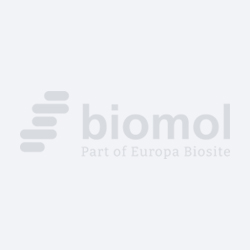Cookie-Einstellungen
Diese Website benutzt Cookies, die für den technischen Betrieb der Website erforderlich sind und stets gesetzt werden. Andere Cookies, die den Komfort bei Benutzung dieser Website erhöhen, der Direktwerbung dienen oder die Interaktion mit anderen Websites und sozialen Netzwerken vereinfachen sollen, werden nur mit Ihrer Zustimmung gesetzt.
Konfiguration
Technisch erforderlich
Diese Cookies sind für die Grundfunktionen des Shops notwendig.
"Alle Cookies ablehnen" Cookie
"Alle Cookies annehmen" Cookie
Ausgewählter Shop
CSRF-Token
Cookie-Einstellungen
FACT-Finder Tracking
Individuelle Preise
Kundenspezifisches Caching
Session
Währungswechsel
Komfortfunktionen
Diese Cookies werden genutzt um das Einkaufserlebnis noch ansprechender zu gestalten, beispielsweise für die Wiedererkennung des Besuchers.
Facebook-Seite in der rechten Blog - Sidebar anzeigen
Merkzettel
Statistik & Tracking
Endgeräteerkennung
Kauf- und Surfverhalten mit Google Tag Manager
Partnerprogramm

| Artikelnummer | Größe | Datenblatt | Manual | SDB | Lieferzeit | Menge | Preis |
|---|---|---|---|---|---|---|---|
| C2391-03C.100 | 100 tests | - | - |
3 - 19 Werktage* |
782,00 €
|
Bei Fragen nutzen Sie gerne unser Kontaktformular.
Bestellen Sie auch per E-Mail: info@biomol.com
Größere Menge gewünscht? Bulk-Anfrage
Bestellen Sie auch per E-Mail: info@biomol.com
Größere Menge gewünscht? Bulk-Anfrage
CD39 is an integral membrane protein with two transmembrane domains and a large extracellular... mehr
Produktinformationen "Anti-CD39 (Apyrase, ATPDase, EC3.6.1.5, Ecto-Apyrase,Ecto-ATPase, ENTPD1, Ectonucleoside triphosphat"
CD39 is an integral membrane protein with two transmembrane domains and a large extracellular region (Maliszewski et al, 1994) with nucleoside triphosphate diphosphohydrolase activity (Wang and Guidotti, 1996). CD39 hydrolyzes nucleotide substrates at extremely high turnover rates, converting ATP directly into AMP without releasing ADP (Wang and Guidotti, 1998). CD39 has six putative N-glycosylation sites within its sequence (Maliszewski et al, 1994) and is heavily glycosylated (Wang et al, 1998). Wu et al (2005) have reported that the presence or absence of certain N-linked oligosaccharides on CD39 affect its enzymatic activity. In the plasma membrane, CD39 forms oligomers that are essential for its enzymatic activity (Wang et al, 1998) CD39 functions on the outer face of the plasma membrane (Maliszewski et al, 1994, Wang and Guidotti, 1996, 1998, Marcus et al, 1997, Wang et al, 1997, Koziak et al, 2000) and is not active until it reaches the plasma membrane. Complete N-glycosylation of CD39 correlates with its enzymatic activity (Zhong et al, 2001). CD39 has been identified originally as a cell-surface glycoprotein expressed on activated B-cells after cell activation (Maliszewski et al, 1994). CD39 is expressed also on NK-cells and subsets ofT-cells, vascular endothelial cells, macrophages, and dendritic cells (Kansas et al, 1991). Wang and Guidotti (1997, 1998) have shown that CD39 is expressed in primary neurons andastrocytes in cell culture and is expressed widely in the glial cells and neurons in the rat brain. CD39 is responsible for the inhibition of ADP-induced platelet aggregation (Kaczmarek et al, 1996, Marcus et al, 1997). Studies with knock-out mice lacking expression of CD39 have indicated that CD39 participates in the regulation of the function of the ADP-dependent purinoreceptor P2Y1 and that its absence results in disordered hemostasis and thromboregulation (Enjyoji et al, 1999). The administration of a soluble form of CD39 has been shown to reduce platelet aggregation (Gayle et al, 1998). Goepfert et al (2001) have reported that chemotaxis of monocyte and macrophages from CD39 knock-out mice to nucleotides is impaired and that CD39 plays a role in the regulation of the cellular infiltration and new vessel growth in a model of angiogenesis. , Fusion Partners: Spleen cells from immunized BALB/c mice were fused with cells of the mouse NS1 myeloma cell line. Recommended Negative Controls: Mouse IgG1 Negative Control: RPE , Applications:, Flow Cytometry: Neat, Optimal working dilutions to be determined by researcher. Flow Cytometry: Use 10ul of the suggested working dilution to label 10e6 cells or 100ul whole blood. , Storage and Stability:, Store product at 4°C before and after reconstitution. DO NOT FREEZE! Lyophilized and reconstituted products are stable for 12 months at 4°C after receipt. Reconstitute lyophilized powder with sterile ddH2O prior to use and store remainder as an undiluted liquid. Dilute required amount only prior to immediate use. Further dilutions can be made in assay buffer. Caution: PE conjugates are sensitive to light. For maximum recovery of product centrifuge the original vial prior to removing the cap.
| Hersteller: | United States Biological |
| Hersteller-Nr: | C2391-03C |
Eigenschaften
| Anwendung: | FC |
| Antikörper-Typ: | Monoclonal |
| Klon: | 3H1279 |
| Konjugat: | No |
| Wirt: | Mouse |
| Spezies-Reaktivität: | human |
| Format: | Affinity Purified |
Datenbank Information
| UniProt ID : | P49961 | Passende Produkte |
Handhabung & Sicherheit
| Lagerung: | -20°C |
| Versand: | +4°C (International: °C) |
Achtung
Nur für Forschungszwecke und Laboruntersuchungen: Nicht für die Anwendung im oder am Menschen!
Nur für Forschungszwecke und Laboruntersuchungen: Nicht für die Anwendung im oder am Menschen!
Hier folgen Informationen zur Produktreferenz.
mehr
Hier kriegen Sie ein Zertifikat
Loggen Sie sich ein oder registrieren Sie sich, um Analysenzertifikate anzufordern.
Bewertungen lesen, schreiben und diskutieren... mehr
Kundenbewertungen für "Anti-CD39 (Apyrase, ATPDase, EC3.6.1.5, Ecto-Apyrase,Ecto-ATPase, ENTPD1, Ectonucleoside triphosphat"
Bewertung schreiben
Loggen Sie sich ein oder registrieren Sie sich, um eine Produktbewertung abzugeben.
Zuletzt angesehen






